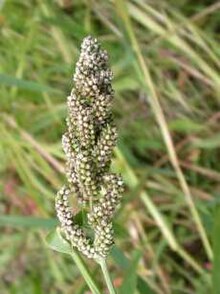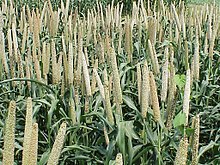Inspired in the "Moneyless" book of Mark Boyle, which I really recommend!
Moneyless guide / Gift Economy / Living sustainable / Self-sufficiency
1- LAND
- you can grow even in small places like windowsills (for those in cities; see my posts from 2009)
- renting or borrowing land (for instance a friend or relative) / landshare
- using urban wastelands
- join an existing ecovillage (see gen-ecovillage.org, ic.org and eurotopia book)
- occupying ghost towns (especially if you have a good of friends)
- buy land (which is not a moneyless option)
2- HOME AND SHELTER
- home sitting / boat sitting
- house exchange
- living in house of friends (or borrowed for free)
- squatting
- caves
- abandoned blackhouses, farmhouses and ruins
- living in a caravan
- yurts and tipis (or even wild camping)
- natural constructed homes (earthships, strawbale, earthbags, roundhouses, subterranean, benders)
3- FOOD
- grow your own (the easiest option for most; very easy to grow potatoes, sweet potatoes, pumpkins, corn, kale, onions, turnips, mustard greens, tomatoes, bush beans and amaranth)
- wild food and forage (see eattheweeds.com)
- catch roadkill
- guerrila gardening (especially in cities)
- skipping and dumpster diving (especially in cities)
- community orchards and gardens
GARDENING
- seed saving and swap (davesgarden.com)
- swapping produce with friends
- food forests, perennial vegetables (low maintainance) like berries, wild greens or fruit trees
- leafcurf (from nettles, ramps, linden, alexanders, groudn elder and charlock)
- growing eggs, honey and mushrooms
- permaculture design (permies.com, geofflawtononline.com)
- start your own compost, fertilizing with liquid comfrey or nettles
- sheet mulching using dead tree leaves instead of digging, dense growing instead of weeding
COOKING
- cooking from scratch / become a vegetarian
- use simple ingredients / buy in bulk (rice, cereals, vegetables, pulses are very cheap)
4- WATER AND HYGIENE
- rainwater harvest
- well, boreholes and rivers
- solar shower
HYGIENE
- soapwort as natural cleanser (or mock orange or new jersey tea)
- hyssop as natural deodorant
- nurture skin with aloe vera
- clean hair and skin: herbs soaked overnight (sage, yarrow, mint, rosemary)
- hair cleaner: rye flour and boiled nettles (or rice flour or boiled linseeds)
- soap: make lye out of rainwater and hardwood ashes, and add fats
- toothpaste made of fennel seeds, cuddlefish bone, salt or baking soda
- toothbrush made out of marshmallow roots, liquorice, neem or eucalyptus
- mouthwash: boiled mint, anise, thyme, rosemary or lavender
- cleaning your bum: water rising, newspaper, leaves, or even rocks
- cut your own hair (or ask a friend)
- cleaning the house: vinegar (make your own apple cider), baking soda, boiled herbs or salt
- cleaning the dishes: wood ashes / scrubber: luffa, a ball of dried grass or pine cones
- wash your clothes: nearby sink or even river; use sun to dry, a mangle or wear them wet!
- compost WCs (very easy to build) (see also my post in building your own greywater system)
5- TRANSPORTATION
- barefoot or moneyless shoes (made of recycled tires, plastic bags and carpet)
- hitchhiking (hitchwiki.org)
- liftsharing
- biking
- couchsurfing.com and trusting fate (people offering you accomodation)
- wild camping or bushcrafting (see "outdoor survival handbook" by Raw Mear)
- stay4free.com
6- ENERGY
- opensourceecology.org project
- solar charger
LIGHTING
- rapeseed oil candles or beeswax (storytelling, singing, games)
COOKING
- start a campire (keyhole fire)
- rocket stove (elbowed flue pipe, 15kg olive cans, insulating material)
- hay box (slow cooking)
- earth ovens (for baking) (see "build your own earth oven" by Kiko Denzer)
HEATING - putting extra jumpers or clothes
- gas bottle wood burner
- mansory oven (more complex)
- solar heater
7- EDUCATION
- homeschooling
- alternative schools (barefoot college, steiner schools, montessori, small school, , sudbury, summerhill) (see "alternative approaches to education, a guide for parents" by Fiona Carme)
- freeskilling groups
- khanacademy.org, coursera.org, instructables.com
- get a used mobile phone from friends/ get a computer through freecycle, trash or through friends
- use linux, skype, openoffice, hushmail, duckduckgo, truecrypt
8- OTHER TOPICS
HEALTH AND SEX
- Localised healthcare (herbalism)
- Menstruation (mooncup, reusable pads)
- Natural contraception (withdrawal method, combined with understanding of a woman cycle)
CLOTHING
- cloth swapping (see swishing.com), get from friends, go to a second hand shop
- make your own, mend, knit your own clothes
- freeshopping
- make clothes out of hemp or nettles (but this requires skills)
- pillows, out of reedmaces / duvets, out of wool
LEISURE
- make and play an instrument (for example make out of wood logs and roadkill skin)
- painting (made out of marigolds, blackberries, poppies, clays, charcoal, chalk, rocks) / mushroom paper
- street parties, games, performances, debate evenings, local groups, sports, movies...
9- CHILD RAISING
- breastfeeding instead of bottles
- no baby food, at six months combine breastfeeding with some cooked food
- get baby clothes from previous parents, friends or relatives
- co-sleeping with the baby (no extra bed)
- diapers (second hand, rewashable) / diaper-free (by understanding the clues of the baby)
- consider skipping non-essential healthcare and vaccinations (inform yourself, at your own risk)
10 - OPPORTUNITIES FOR SMALL INCOME
(but then you will be part of the system and not truly moneyless)
- unemployment benefits
- woofing, volunteering
- organizing workshops, teaching yoga
- making and selling handcrafts in local markets
- giving massages
- selling in ebay
- writting a blog and adding adsense
- writting and selling ebooks
- local garden work
- seasonal jobs (like fruit harvest)
Get rid of your debts! Potencially get rid of your TV or car!
11- PEOPLE LIVING MONEYLESS
- Mark Boyle
- Daniel Suelo
- Peace pilgrim
- Heidemarie Schwermer
- Elf Pavlik
- Tomi Astikainen
- Jurgen Wagner
.... (links to be added)
12- EXTRA RESOURCES:
- Freeconomy groups, Freegle (ilovefreegle.org), Freecycle.org (second hand stuff and toolsharing)
- GIFT CIRCLES and GIFT ECONOMY (information in soon)
- HelpX, Woofing, Volunteering
- LETS and Timebanks
- Swapaskill.com and Localskillswap.com
- Street freecycling (there are a lot of stuff that people put out in the streets for free to take)
- Book Swap (ReaditSwapit.co.uk and Bookmooch.com), booksharing clubs, Bookcrossing
- Papers and pens: inkcap mushrooms; molted wing feather; birch polypores or polyporus squamosus along with a mesh to make the paper / making recycling paper
- (more links to be added in soon)



















